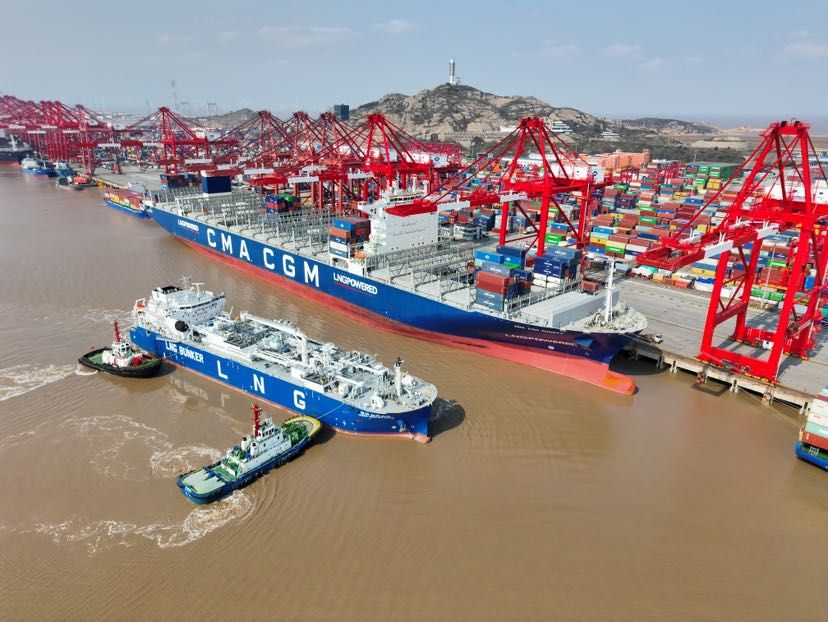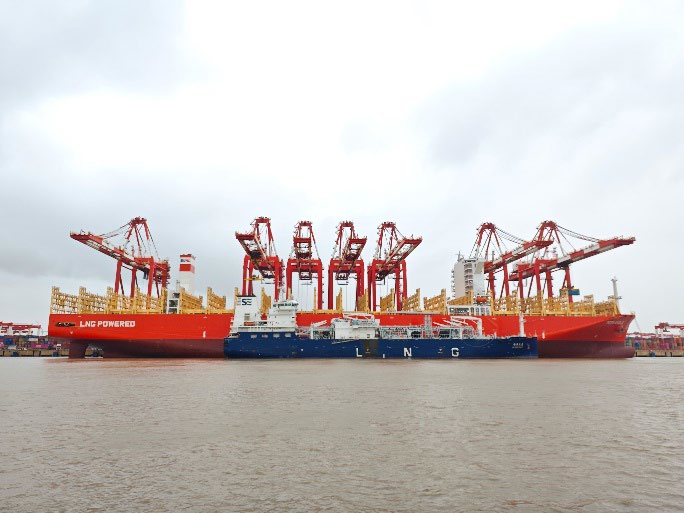
Several key Chinese provinces have issued warnings of power shortages in the upcoming summer due to insufficient generation capacity and strong economic activity, which could tighten markets for key fuels like LNG and boost prices in the Asian LNG spot market.
Five key Chinese provinces of Shandong, Guangdong, Jiangsu, Zhejiang and Yunnan, which had 2020 electricity consumption of 6,940 GWh, 6,926 GWh, 6,374 GWh, 4,830 GWh and 2,026 GWh, respectively, warned in recent weeks they could face shortages in the peak summer season.
Together, they accounted for more than a third of China's total power consumption of 75.11 TWh in 2020, data from the National Energy Bureau showed.
Shandong's provincial energy bureau has forecast a power supply gap of 2 million kW for peak summer, and the gap may widen if there is an unexpected coal or gas supply shortage, reduced power supply from other provinces, and extreme weather, according to a notice on its website May 18.
Power supply in Guangdong will be tight in 2021, especially between alternating dry and peak summer periods when there is a greater risk of peak-load shifting and power-rationing due to shortages, according to Guangzhou's power utilization plan for 2021 submitted by Guangdong Power Grid and approved by the Guangzhou Municipal Industry and Information Technology Bureau on May 10.
Some cities in the heavily industrialized Guangdong province, such as Guangzhou, Foshan, Dongguan, Huizhou, Zhuhai, Zhongshan and Chaozhou have begun implementing peak load-shifting for industrial power consumption, according to local media reports. Peak load-shifting is the process of staggering peak power demand to reduce the pressure on supply infrastructure.
The Jiangsu provincial energy bureau said on May 7 it expected a power supply gap of 4.2 million-9.25 million kW in peak summer, and the Zhejiang provincial energy bureau issued a peak summer forecast for a 2 million kW supply gap in late April.
In Yunnan, several months of drought have impacted hydropower supply, according to the China Meteorological Science network, a subsidiary of China Meteorological Administration. This has added to power supply concerns for summer.
Reliance on domestic production
While domestic electricity and energy demand are growing, almost all energy prices including coal, oil and gas have been rising rapidly in the past few months, prompting the Chinese government to prioritize energy security over decarbonization concerns and reduction of fossil fuels like coal and gas.
Premier Li Keqiang said at an executive meeting of the State Council on May 19 that China should take advantage of its rich coal resource and urged key coal companies to increase production and supply.
He also said the production of wind power, solar power, hydropower and nuclear power must be increased to ensure peak summer supply.
Although China has made initial attempts to cap the growth of coal consumption, total coal consumption is still growing during its 14th Five-Year Plan period, said Su Wei, deputy secretary-general of the National Development and Reform Commission on April 22.
“Coal-fired power plants remain critical for ensuring the stable supply of electricity [in China], and provide necessary supplements for renewable energy power generation,” he said. Coal accounted for 56.8% of China's total energy consumption of 4.98 billion mt standard coal equivalent in 2020.
Meanwhile, China's national oil companies are boosting domestic gas production that is expected to hit record levels this year, supported by shortages for other fuel sources.
Gas-fired power plants
Strong economic growth has driven up China's total power consumption this year, with the central government in March setting a gross domestic product growth target of above 6% for 2021 compared with growth of 2.3% in 2020. China's total power consumption rose 21.2% year on year in the first quarter, mainly driven by a year-on-year growth of 24.1% from industries, according to the NEA.
Robust power demand is expected to force domestic generation companies to push gas-fired power plants to full utilization, as they are ideal for balancing peak demand and carbon emissions caps despite high generation costs.
This will inevitably increase China's demand for natural gas, including LNG, and boost prices for spot LNG cargoes, similar to the demand surge seen in the winter of 2020-21. Provincial power utilities like Guangdong Energy and Huadian Power International have already raised the operating rate at their gas-fired plants.
Besides, China will start commissioning more gas-fired power plants in 2021, which have an estimated installed capacity of 8 GW. These plants will contribute to the country's total power supply as well as consuming more natural gas this year.
China's natural gas demand from gas-fired power plants is expected to rise 8.6% in 2021, accelerating from the 7.7% growth last year, according to the latest forecast from CNPC's Economics & Technology Research Institute, or ETRI. Gas consumption from the power generation sector accounted for 17.5% of China's total gas demand in 2020, ETRI data showed.
Source:Platts
The opinions expressed herein are the author's and not necessarily those of The Xinde Marine News.
Please Contact Us at:
media@xindemarine.com


 WOODSIDE AND CHINA RESOURCES AGREE LONG-TERM LNG SU
WOODSIDE AND CHINA RESOURCES AGREE LONG-TERM LNG SU  Shanghai Yangshan Port Bunkered Two LNG Powered Con
Shanghai Yangshan Port Bunkered Two LNG Powered Con  Headway successfully delivers filtration skid solut
Headway successfully delivers filtration skid solut  Celebrating the Launch of “Green Energy Pearl” –
Celebrating the Launch of “Green Energy Pearl” –  PIL and SSES complete the inaugural LNG bunkering o
PIL and SSES complete the inaugural LNG bunkering o  BW LNG secures e-procurement deal with Procureship
BW LNG secures e-procurement deal with Procureship